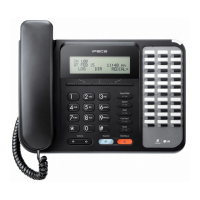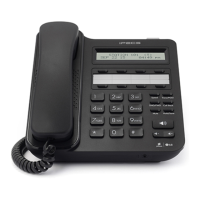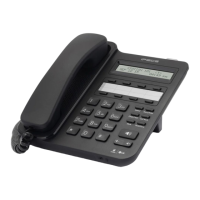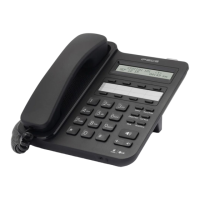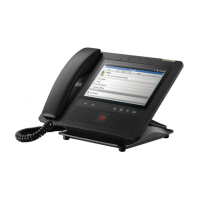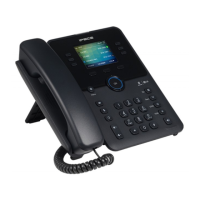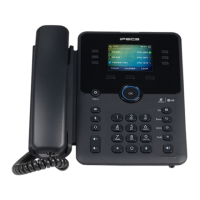LIP-7024LD User Guide
8
3. Receiving calls
3.1 Answering a Call While Idle
There are 3 basic types of incoming calls; internal/external ringing calls,
Intercom Voice Announce calls, and Hold re
calls.
Your phone may be assigned Ringing Line Preference; calls that ring
are answered by lifting the handset. Otherwise, you must press the
flashing Flex button.
External calls to an iPECS Phone will appear under the CO/IP line or a
LOOP button
External calls are from CO lines or VoIP channels that are programmed
to ring at your phone. For external calls, Delay Ring may be assigned
allowing others to answer the call before the call rings at your phone.
Calls can be forwarded in some manner from another user; if providing
call coverage for other users, you may also receive Station Call
Coverage calls.
Calls placed on Hold, including Transfers, parked calls, etc. will recall if
left on hold for too long.
ICM Voice Announce calls are answered based on the ICM Signaling
mode at the receiving phone; in Hands-free (HF) mode, after the splash
tone and announcement, speak normally into the microphone. In the
Privacy (PV) mode, lift the handset to respond. The ICM Signaling
mode can be assigned in Station Programming.
The L
CD will display the calling number or, if available, the name of the
station or CO/VoIP line, CO Line Name Display.
OPERATION
To answer a call ringing at your phone:
Lift the handset and press the flashing Flex button (as needed), the
call will be connected.
To respond to an Intercom Voice Announce call:
In HF mode signaling, simply speak as normal into the microphone,
OR
In PV mode signaling, lift the handset to respond.
3.2 Responding to a Call While Busy
While you are busy on another call, you may receive Muted Ring, Camp-
On tones, or Voice-Over announcements. Muted Ring is provided over
the speaker of your Phone indicating a Call Waiting. You also may
receive Camp On tones, a burst of tones on top of the existing call, as
an indication of another call waiting.

